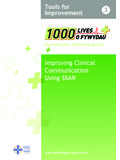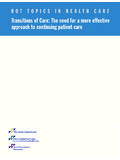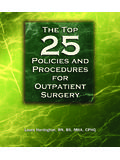Transcription of Improving Critical Care - 1000 Lives Plus
1 Critical CareImproving Critical CareAcknowledgementsThis guide has been produced by Dr Dave Hope, Dr Mark Smithies, Chris Hancock and Dr Alan would particularly like to thank healthcare organisations in Wales and their teams for their work in implementing these interventions and also feeding back lessons and experiences gained as a result. We would also like to thank the Critical care Networks for their invaluable help and Lives Plus is run as a collaborative, involving the National Leadership and Innovation Agency for Healthcare, National Patient Safety Agency, Public Health Wales and the Clinical Governance Support and Development Unit. We wish to thank and acknowledge the Institute for Healthcare Improvement (IHI) and The Health Foundation for their support and contribution to 1000 Lives Plus. Date of publication This guide was published in April 2010 and will be reviewed in April 2012.
2 The latest version will always be available online on the programme s website: purpose of this guideThis guide has been produced to enable healthcare organisations and their teams to successfully implement a series of interventions to improve the safety and quality of care that their patients guide must be read in conjunction with the following: Leading the Way to Safety and Quality Improvement How to ImproveFurther guides are also available to support you in your improvement work: How to Use the Extranet A Guide to Measuring Mortality Improving Clinical Communication using SBAR Learning to use Patient Stories Using Trigger Tools Reducing Patient Identification ErrorsThese are available from the 1000 Lives Plus office, or online at Where reference is made to 1000 Lives Plus, this includes the work undertaken as part of the 1000 Lives Campaign and the second phase of this improvement programme 1000 Lives guide uses examples from the former NHS organisational structures, and where possible this has been are grateful to The Health Foundation for their support in the production of this Critical CareImproving care , delivering qualityThe 1000 Lives Campaign has shown what is possible when we are united in pursuit of a single aim.
3 The avoidance of unnecessary harm for the patients we serve. The enthusiasm, energy and commitment of teams to improve patient safety by following a systematic, evidence-based approach has resulted in many examples of demonstrable safety , as we move forward with 1000 Lives Plus, we know that harm and error continue to be a fact of life and that this applies to health systems across the world. We know that much of this harm is avoidable and that we can make changes that reduce the risk of harm occurring. Safety problems can t be solved by using the same kind of thinking that created them in the first place. To make the changes we need, we must build on our learning and make the following commitments: Acknowledge the scope of the problem and make a clear commitment to change systems. Recognise that most harm is caused by bad systems and not bad people.
4 Acknowledge the Improving patient safety requires everyone on the care team to work in partnership with one another and with patients and national vision for NHS Wales is to create a world-class health service by 2015: one which minimises avoidable death, pain, delays, helplessness and waste. This guide will help you to take a systematic approach and implement practical interventions that can bring that about. The guide is grounded in practical experience and builds on learning from organisations across Wales during the 1000 Lives Campaign and also on the experience of other Campaigns and improvement work supported by the Institute for Healthcare Improvement (IHI).Contents Introduction 4 Driver Diagram 8 Getting Started 9 Drivers and Interventions 10 Helpful Resources 26 Appendices Measures and Definitions 36 Setting up your team 41 The Model for Improvement 43 Improving Critical aim of the Improving Critical care (ICC) work area detailed in this How to Guide is to build upon the success of the 1000 Lives Campaign, the Welsh Critical care Improvement Programme (WCCIP) and Safer Patient Initiative (SPI) in supporting clinical teams to implement the sepsis, ventilator and central line bundles and to promote hand hygiene and improved communication.
5 The compliance with CVC and Ventilator bundles in Wales has stood at a greater than 95% compliance level for in excess of two years yet the implementation of the Sepsis Bundles has been less comprehensive despite collaboration with the Welsh Critical care Advisory Group, Critical care Networks and other Intensive care Units (ICUs) across Wales have had considerable success in implementing the Sepsis Management bundle as part of WCCIP and the 1000 Lives Campaign and demonstrating compliance at rates greater than 95%. However, Critical care mortality due to severe sepsis appears to have remained unchanged. It is now widely acknowledged that early and appropriate treatment must be commenced in acute hospital areas to bring about any DoH publication of 2000 Comprehensive Critical care made it clear that Critical care should be regarded as a patient need which is not restricted to the The emphasis, therefore, as we move forward will be both on consolidating the gains made within the ICU but, more importantly on strengthening the improvement work for acute and critically ill patients in the wider hospital.
6 Thus the prevention of localized sepsis will be addressed through spread of the CVC and ventilator care bundles in areas where they are yet to be implemented, the development of systems for the early detection and treatment of severe sepsis, improvement of communications within the ICU and between the ICU and acute hospital areas and the improvement of hand SepsisThe term severe sepsis covers a number of infectious diseases that result in a common picture of multiple organ failure. It is a condition with high prevalence about of hospital patients and about 27% of intensive care ,3 Mortality rates are very high around 30 50% which, in Wales may equate to the deaths of between 700-1100 people in ICU annually. Globally, sepsis kills about half a million people a year: as many as myocardial recent large scale US study has estimated that in cases associated with invasive surgery, attributable mean length of stay due to sepsis was days, costs were $32 900, and mortality was whereas in cases not associated with invasive surgery, attributable mean length of stay, costs, and mortality due to sepsis were estimated to be to days, $5800 to $12 700, and to recently sepsis has had a low public profile.
7 Reporting of cause of death on death certificates often omits the term severe sepsis so its prevalence has been under-reported. Effective treatments have been hard to come by. Times are changing though and there is a growing international consensus both on the scale of the challenge and the practical ways to bring down mortality Critical CareThe good news is that the most effective treatments are simple interventions such as giving oxygen, large volumes of intravenous fluids and The main challenge is that these treatments must be given early in the disease process to be effective. The focus then has to be on the early identification of patients with sepsis and delivery of a package of treatments within a few hours of the onset of the disease. These simple targets are hard to achieve and require us to redesign how patients are monitored and treated throughout the hospital, employing care bundles or pathways of care and transferring Critical care skills to acute hospital areas through Outreach, Acute care or Rapid Response PneumoniaVentilator-associated pneumonia (VAP) is a nosocomial lung infection that occurs in patients receiving mechanical ventilation and for whom the infection was not the reason for ventilation, , the infection commenced after ventilation.
8 Pneumonia is considered as ventilator associated if the patient was intubated and ventilated at the time or within 48 hours before the onset of infection. Respiratory tract infections, at 24%, are the most common Healthcare Associated Infections (HCAI) in Wales6 and VAP is the leading cause of death among HCAIs: hospital mortality of ventilated patients who develop VAP is 46%, compared to 32% for ventilated patients who do not develop In addition, VAP prolongs time spent on the ventilator, length of ICU stay, and length of hospital stay after discharge from the Strikingly, in the US VAP adds an estimated cost of $40,000 to a typical hospital As a result of involvement in WCCIP, SPI and 1000 Lives Campaign all Adult General ICUs in Wales have been achieving a greater than 95% compliance with the Welsh Ventilator Bundle since 2007.
9 Reporting of VAP has been mandatory in Wales since September 2008 and several units have reported one or more months with a zero rate of VAP during this time which appears to be associated with various interventions including the ventilator care bundle. The challenge now is to spread this bundle to the specialised ICUs. Central Venous Catheter (CVC) related infectionsCentral venous catheters (CVCs) are being used increasingly in the inpatient and outpatient setting to provide long-term venous access. CVCs disrupt the integrity of the skin, making infection with bacteria and/or fungi possible. Infection may spread to the bloodstream and haemodynamic changes and organ dysfunction (severe sepsis) may ensue, possibly leading to death. Forty-eight percent of US intensive care unit (ICU) patients have central venous catheters, accounting for about 15 million central-venous-catheter-days per year in ICUs.
10 Approximately central line infections (often termed catheter-related bloodstream infections) occur per 1,000 catheter days in US ICUs. The attributable mortality for such central line infections is approximately 18%. Thus, probably about 14,000 deaths occur annually due to central line infections. Some estimates put this figure as high as 28,000 deaths per ,11,12 Improving Critical addition, nosocomial bloodstream infections prolong hospitalization by a mean of 7 days. Estimates of attributable cost per bloodstream infection are estimated to be between $3,700 and $29,000 or in excess of 20,000 ,14 All Wales ICU compliance with the CVC bundles has been monitored through various patient safety programmes and through the Critical care Networks and has generally been greater than 95% since 2007. In several ICUs there seems to be an association between this high compliance and maintaining a zero rate of Catheter Related Bloodstream Infection (CRBSI) for extended periods of CRBSI surveillance has been mandatory since September 2007 as part of the Welsh Healthcare Associated Infections Programme (WHAIP).

















